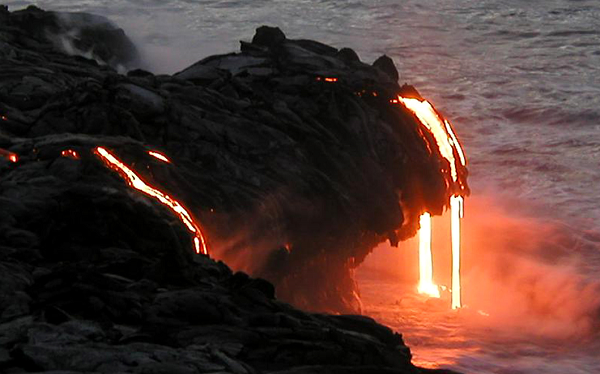Video Explores Earth’s Destruction If Its Crust Suddenly Opens Up

KEY POINTS
- A YouTube video discussed the possibility of the Earth's crust opening up
- A large igneous province is a natural geological feature
- LIPs could cover the planet in lava and cause wide-scale destruction
A new scientific video explored the possibility of Earth’s crust opening up and covering the surface of the planet with lava. According to the video, such an event, which could really happen due to a geological feature, would cause an unimaginable level of destruction.
The video about the terrifying event was made by the YouTube channel What If. It focused on a natural feature known as a large igneous province (LIP).
LIPs are geological features that occur when a massive amount of magma rises from the Earth’s crust and onto its surface. Aside from covering the surface in lava, the magmatic movement could also trigger other events such as powerful earthquakes and sudden climate change.
According to the video, such an event almost happened 250 million years ago in Siberia. If it happens today, the intense earthquakes, extreme heat and flow of lava would cause extensive damage to populated areas. It could also cause mass extinctions across different species.
“Farmlands needed for raising crops would be incinerated,” the video stated. “Bodies of water like lakes, streams and rivers would be vaporized if there was enough lava. And depending on how fast the lava flows, endangered species would be wiped out if they couldn’t relocate in time.”
Like animals, the chances of humans surviving LIPs are pretty slim. On average, lava flows on a flat scope at a speed of about 10 kilometers per hour. However, when flowing downhill, lava can move at a speed of up to 100 kilometers per hour. Since the average running speed of humans is about 13 kilometers per hour, outrunning the flow of lava is almost impossible.
Aside from the lava itself, humans would also have to deal with the toxic chemicals that it would release into the air. This means that even if people manage to outrun lava, they are still in danger of dying due to its toxic fumes.
“In addition to the extreme heat, burning, melting and destroying anything it touches, lava releases particles into the air and toxic gases such as sulfur, carbon dioxide and halogen,” the video explained. “Even if you can get out of the lava’s path, you’re still in danger from breathing the gas and particles in the air.”
© Copyright IBTimes 2024. All rights reserved.





















